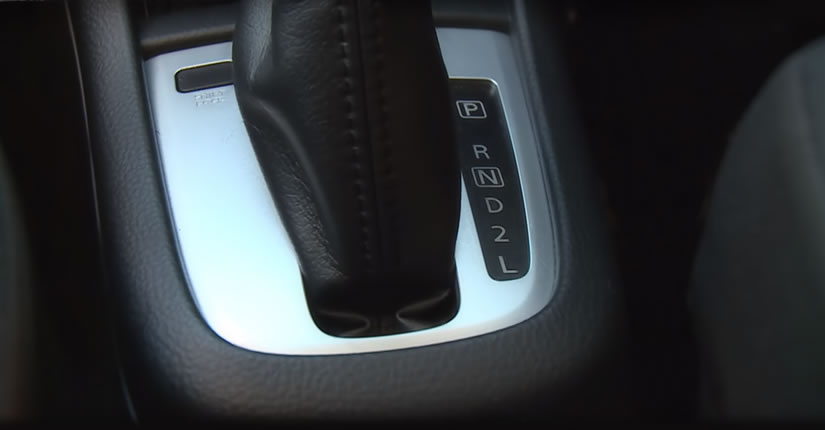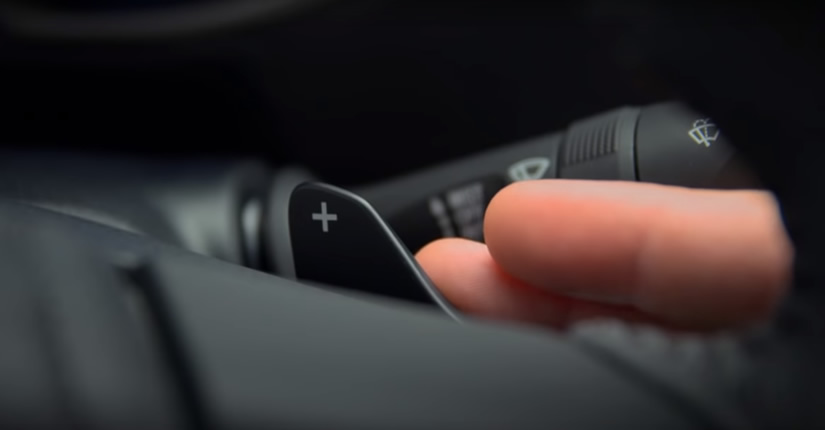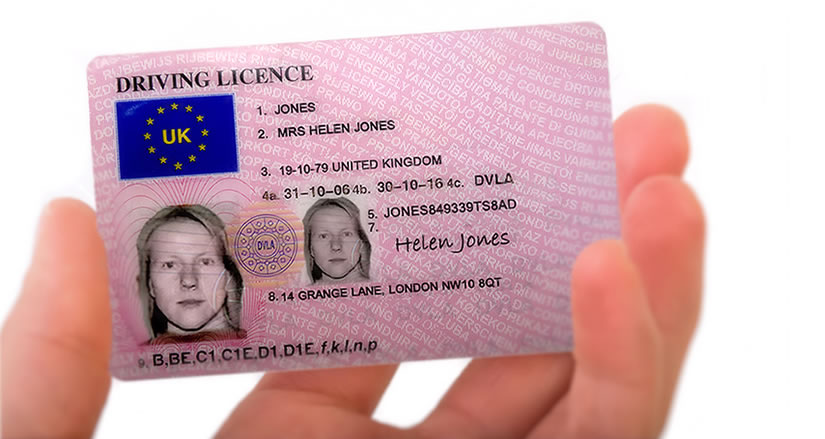Having an automatic driving licence once meant you were restricted to a handful of cars, all of which weren’t very desirable. Due to the extra costs in making complicated automatic transmission and low sales, car manufacturers were reluctant to produce cars with automatic transmission. But gone are the days of the slow and boring automatic and as such, many more drivers are opting for automatic cars.
There’s now a huge selection of automatic cars, many of which are fuel efficient, responsive and fun to drive. But what exactly can you drive on an automatic licence?
What Can I Drive on an Automatic Licence?
If you have a driving licence that restricts you to vehicles with automatic transmission only, the DVLA states that you can drive any car that does not have a manual clutch to operate. These types of cars are as follows:
Traditional Automatic Transmission

The traditional fully automatic transmission has been around for many years and is what you would typically find in cheaper modern cars, or older used cars. Like manual transmission cars, these gearboxes use cogs to differentiate the gears but instead of using a clutch to change gear, they use something called a torque converter. Due to numerous improvements over the years, they have become highly reliable and offer greater fuel efficiency.
Some automatic gearboxes offer some degree of control over the gears, for example you may see the numbers 1, 2 and sometimes 3 as part of the gear selectors. On some versions, ‘1’, or ‘1st gear’ may also be labelled at ‘L’, or ‘low gear’. You would select this gear when you required maximum power, for example going up a steep hill or towing a heavy load. The gearbox will stay in this gear until you change it. Other gears such as ‘2’, or ‘2nd gear’ are useful for when moving off on a slippery surface.
You’ll also often see ‘S’ which is sports mode. When sports mode is selected, gears are held for longer, reaching higher engine speeds that allow for greater acceleration. Certain automatic cars may have ‘OD’ which stands for’ Overdrive’. This is the highest gear available and provides better fuel economy.
Continuously Variable Transmission (CVT)
In terms of how the driver operates the vehicle, there’s little difference in a CVT compared to a traditional automatic. However, a CVT system mechanically operates very differently to a traditional automatic.
Unlike the traditional automatic, a CVT does not have gears and instead uses belts and pulleys to give an unlimited range of gear ratios. Essentially there’s no gear changing and the engine is always kept at the most efficient speed. The advantage of a CVT is a much smoother ride and better fuel economy, which is why they’re often used in modern hybrid vehicles.
Semi-Automatic Transmission

Many drivers that hold an automatic licence often ask whether they can legally drive a car with semi-automatic transmission. As vehicles with semi-automatic transmission do not have a manually operated clutch, then yes, you can legally drive one.
The semi-automatic transmission is also known as a paddle-shift gearbox, semi-manual transmission, clutch-less manual transmission and automated manual. Certain car manufacturers also have their own brand names for this type of transmission.
The semi-automatic transmission is essentially a manual gearbox, but where the clutch and gear changing is done automatically. This can be done fully automatically (the driver leaves the gear selector in drive) or the driver can decide when a gear is to be changed by use of paddle shifters mounted on the steering-column or a shift lever.
Semi-automatic transmissions have either a single clutch, or in modern vehicles, a dual clutch system. Dual clutch systems change gear very quickly and are used in high performance vehicles.
Electric Vehicles
Unlike vehicles that have an internal combustion engine, electric vehicles do not contain a multi-speed transmission. The majority of electric cars have a single gear, with a small number having two gears – all of which are automatic.
Due to all electric cars having either no clutch or an automatic clutch, drivers holding an automatic licence can legally drive any electric vehicle.

My liscence has got 0,4 restriction. What does this mean?
Hi Mandla,
If it’s not a UK driving licence, then I’m not too sure I’m afraid.
Hi I am holding automatic gear licence so can drive manual gear car till I get manual licence.
Hello Manuel,
You can’t drive a manual car without a supervising passenger. You can only drive a car with a manual transmission unaccompanied when you have passed the driving test in a manual car. If you do want to learn to drive manual, you don’t need to apply for another provisional licence, but you do need to follow all the other rules for learner drivers.
I’m asking myself the same question
Does it mean when my license is written “automatic transmission” in the back I only have to drive cars with automatic gearbox?
Hi Bokang
If it’s a driving licence from the UK, you’ll have a restrictions column with a code (78) restricting you to drive vehicle’s with automatic transmission only. Please see how to tell if a driving licence is automatic. If it’s a licence from another country, then I’m not too sure and I’d recommend contacting your vehicle licensing authority.
I have an automatic licence can i drive a van?
Hi George,
Yes you can drive a van, but it must be automatic transmission only. You need to check your licence categories on the back of your licence. For example if your licence category is B Auto, it means that you can drive a category B vehicle, but it must be automatic. If you passed your driving test on or after 1 January 1997,
You can drive vehicles up to 3,500kg MAM with up to 8 passenger seats (with a trailer up to 750kg).
You can also tow heavier trailers if the total MAM of the vehicle and trailer is not more than 3,500kg.
Hi can a automatic licence only holder teach a auto learner
Hi Dale,
Yes, you can teach a learner driver in the same category that is on your licence.
My wife only has an automatic licence, and has just bought a car which is semi automatic. It has a paddle shift, but also a traditional auto gearbox. The insurance check says it’s a manual…. Is this correct or incorrect. Should we get it changed on the V5C. (I need to say that we haven’t actually picked the car up yet, but I’m assuming the V5 will state manual, hence why the insurance website listed it as a manual)
Hi Andy,
No it shouldn’t say manual. It’s not that uncommon to have these types of errors on the V5C form. You shouldn’t get into any problems with the error, so it really depends on whether it bothers you or not.
I have an automatic driving license – would this allow me to drive a car with dual clutch transmission? Or would I need to have a manual driving license for that?
Hi Ella,
Yes you can drive both an automatic and semi-automatic car on your licence. A semi-automatic is defined as a car that you can change gears either by use of the gear paddle shifters on the steering column, or where you can change gear at the gear shifter lever.
Hi iv just passed my driving test in a automatic what automatic vehicles can drive because I’m going for a ford focas thank you
Hi Marty,
Congratulation on passing your driving test!
You can drive any car that changes gear automatically for you and does not have a clutch pedal. That’ll include all electric cars which don’t have any gears at all. That also includes automatic and semi-automatics. Some semi-automatics allow you to change up or down at the gear selector lever, you may see a 1, 2 or 3, or on more modern automatics, you see a + and – for going up and down gears. Some semi-autos also have the paddle shifters on the steering column which can be quite fun to drive, particularly on sporty cars and especially those that have a dual clutch gearbox (very fast gear changes). There’s plenty of options out there, so provided it doesn’t have a clutch pedal, you can take your pick on what’s out there.
I’m about to buy a car with tiptronic gearing. My wife only has an automatic license. Is she legally allowed to drive a tiptronically geared vehicle?
Hi Nigel,
In terms of driver licensing, any car that does not have a clutch floor pedal is considered automatic. Tiptronic allows the option to manually choose a gear, but the gearbox is still doing the gear changing automatically for you, hence the term ‘semi-automatic’. So yes, your wife can legally drive any car with a semi-automatic gearbox, including those with Tiptronic.
Hi, I have an restricted to automatic cars driver license, can I drive a camper van or a caravan?
Hi Edward
If you were to drive a campervan, it would need to be an automatic as that’s what you’re licensed to drive. Other than that, what you can drive or tow is about weight. Use this tool on the Gov website to find out more: Towing Rules.
Hi
My daughter is 29 years old and holds a UK automatic driving licence. Can she drive a semi-automatic 7.5T horse lorry.
Rachel
I have a driving licence with automatic transmission since 1980. I drive automatic car for many years.
I am considering to buy a 2023 new Hyundai i10 with a five-gear automated manual transmission (AMT) with shift lever and two foot pedals (brake and accelerator).
Can I drive an AMT car in automatic gear on my present licence?
Am I allowing to drive with manual shift mode if change gear cos I don’t have a maual driving licence?
Hi Allan,
Yes, you can drive the i10 on your automatic licence. This is because the car is changing gear for you, even in ‘manual’ mode. Driving in manual mode is called ‘semi-automatic’, meaning you can choose what gear you want the car to change into, either via the gear shift or by those paddle shifters you see on the steering wheel. Even though semi-automatics offer more freedom and control, the car is still doing the gear changing process for you. On your automatic licence, you can drive automatic and semi-automatic cars.
With an automatic driver’s license in England and the USA, can I use shift paddles and can I also shift lever + upshift and – downshift. Can I use paddle shifters and shift lever – + in England and the USA with an automatic driving license
Hi Danm,
A car is classified as automatic when it doesn’t have a manual clutch. The – and + of the shift lever and the paddle shifters allow you to manually change gear, but the process is carried out using an automated clutch. You can use any gear changing systems and equipment that comes with an automatic car in England. I’m not too sure about the USA, but I would assume it’s the same.
For every country it is like this or or only some
I can only say for certain that this is the case in the UK.
But it would stand to reason that in an automatic car (as defined by not having a manual clutch pedal), as a licensed automatic car driver, you would be permitted to use any of the equipment that comes as standard in an automatic car, including paddle shifters and the – / + of the shift lever.
Ok There is an imt transmission, it is a completely normal manual transmission but there is no clutch pedal. We are allowed to drive this car with an automatic driver’s license. Hyundai and Kia have it
Do car insurance treat semi automatics differently to automatics?
Hi Tomos,
No, car insurance providers treat semi-automatics the same as automatics.
Great, Thanks!
Just to clarify it shows up as Automatic on the insurance details as well?
Yes, it will state in your insurance documentation that you’re restricted to drive automatic vehicles.
Thanks! Does that mean they put automatic in the transmission bit?
In the transmission bit of the car?
Well, there are different types of automatic transmissions, but in terms of the insurance company, they define it by the car not having a manual clutch pedal. So a car with manual gear shifters, either the + and – (up and down gear) at the gear lever, or the paddle shifters at the steering wheel, would be considered semi-automatic – so you’d still be able to use these with an automatic licence.
We can drive a sequential manual transmission with an automatic driving license
Hi Danm,
Yes, you can drive sequential manual transmission with an automatic driving licence.
but without clutch pedal or and where do you know all this
It will be defined by your country’s driving and licensing organisation. In the the UK, that will be the Driver and Vehicle Licensing Agency (DVLA) and Driver and Vehicle Standards Agency (DVSA).
Hi, I have just passed my test and have an automatic license. I am looking to get a Toyota Aygo X-Shift which has a semi-automatic gearbox.
It may be a silly question, but can I just drive the car using the automatic bit and not the D with + and -?
Thank you
Hi Darcie,
You can drive the car with the automatic bit and you can also drive the car with the semi-automatic bit; the + and the – if you wish.
There is no manual clutch pedal, so it’s still defined as an automatic.